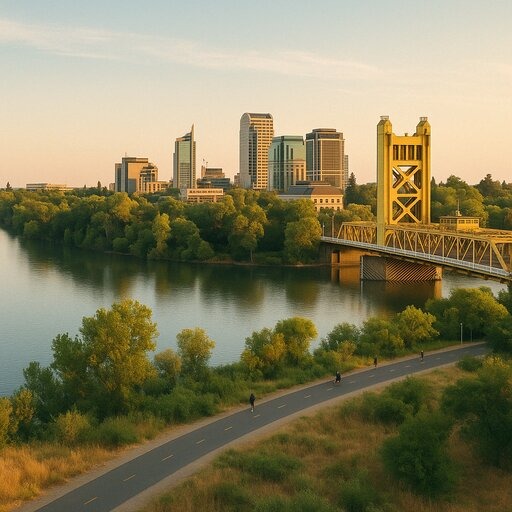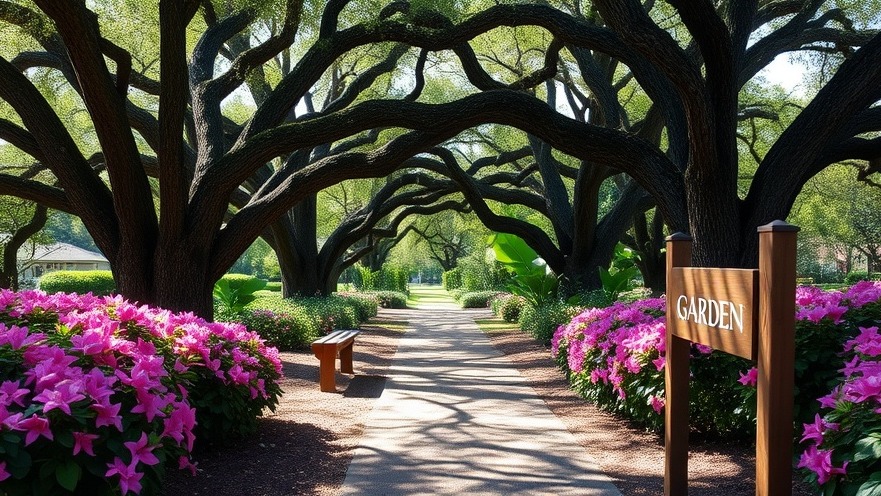🏞️ Folsom Lake State Recreation Area – Visitor Information
📍 Name: Folsom Lake State Recreation Area
📫 Address: 7755 Folsom-Auburn Rd, Folsom, CA 95630
📞 Phone: (916) 988-0205
🌐 Website: https://www.parks.ca.gov/?page_id=500
A Place Where the Past Echoes and the Present Plays
If you stand quietly along the shoreline of Folsom Lake just after sunrise, you might hear more than the lap of the water or the rustle of blue oaks.
You might feel the echoes—of salmon pushing upstream, of Gold Rush footsteps, of ancient Native traditions still carried in the soil. Here in the Sierra Nevada foothills, less than an hour from Sacramento, lies a place where adventure, history, and nature are braided together like the American River itself.
More than a lake, more than a park, Folsom Lake State Recreation Area is a living storybook—one written by miners and migrants, by oaks and acorns, by caretakers past and present. Beneath its waters lie the ghost foundations of Mormon Island, a Gold Rush town lost to time.
Along its trails roam hikers, bikers, horseback riders—and memories of those who shaped the land long before it bore campsites and kayaks.
“Every time the lake levels drop,” one longtime ranger shared, “we uncover pieces of the past. It's like the land is reminding us who came before, and why it matters that we protect it now.”
This article takes you behind the scenes of California’s second most visited state park—a place where engineering meets ecology, where community meets conservation, and where each bend in the trail tells a story worth remembering.
The Origin Story – From Flood Control to a Statewide Favorite
The story of Folsom Lake begins with a powerful force—water. After catastrophic flooding in the early 20th century, the U.S. Army Corps of Engineers completed Folsom Dam in 1955, creating a reservoir to help regulate the American River. What started as a water management project quickly evolved into one of California’s most beloved recreation areas, with over 19,500 acres of rolling hills, coves, and multi-use trails.
But before the dam, this land held a different life. Indigenous tribes like the Nisenan and Southern Maidu lived in the region for thousands of years, building seasonal villages along the riverbanks.
They wove intricate baskets from willow and redbud, traded acorns and shells with coastal communities, and treated the land as a spiritual partner.
Then came the Gold Rush. Settlements like Mormon Island popped up, fueled by dreams of wealth. One of the earliest major mining camps, Mormon Island boasted thousands of residents at its peak—until fire and dwindling resources caused it to fade. Today, its ruins lie buried beneath the lake, only emerging during times of drought.
Challenges Along the Shoreline
Like the shifting tides of the lake itself, Folsom Lake SRA has weathered many changes. During drought years, low water levels have exposed not only forgotten towns but also the vulnerabilities of a region dependent on snowpack and rainfall. These conditions impact recreational access, fish populations, and public expectations.
Cultural considerations have also surfaced. One notable change came in 2022, when the park officially renamed “Negro Bar” to Black Miners Bar, acknowledging its past as a Gold Rush-era African American settlement. These decisions reflect a larger effort to honor the full history of those who shaped the region, including those often overlooked in textbooks.
“Balancing historical integrity with modern values isn't easy,” said a local historian. “But this park continues to evolve in ways that reflect both its roots and our future.”
Lessons from the Land – What the Park Teaches Us
In an era when digital escapes are easy to find, Folsom Lake offers a different kind of connection—to the land, to the past, and to ourselves. Trails like Darrington or Folsom Point offer more than exercise; they serve as outdoor classrooms where visitors can learn about native plants, geological layers, and migratory birds that use the lake as a seasonal stop.
And then there's the Nimbus Fish Hatchery, just downstream. Built in 1955, it’s a beacon of conservation, helping to preserve populations of Chinook salmon and steelhead trout whose spawning grounds were disrupted by the dam. Kids can watch fish climb the ladder or peer into rearing tanks, making this one of the region’s best educational outings.
This is a place where ecology and recreation go hand in hand—where kayakers glide past herons and equestrians ride alongside deer.
Unique Offerings That Set Folsom Lake Apart
So what makes this park different from any other in California?
For starters, it has a dual-lake personality. On one end is Folsom Lake, a bustling hub of boating, jet skiing, swimming, and fishing. On the other is Lake Natoma, a tranquil, non-motorized haven perfect for paddleboarding and rowing. In fact, it’s a training site for Olympic athletes and hosts national collegiate rowing events.
Few parks offer that kind of versatility in such close proximity.
Then there’s the chance to literally walk through history. During particularly dry summers, visitors can explore the stone remnants of Mormon Island or hike to Salmon Falls Bridge, a 19th-century crossing normally submerged under water.
Add to that:
95+ miles of trails for hiking, biking, and horseback riding
Campgrounds at Beal’s Point and Peninsula, with lakefront views
A preserved 1893 powerhouse that once powered Sacramento—now a State Historic Park
And the recently renamed Black Miners Bar, a living tribute to the African American gold miners who helped shape the region
Folsom Lake isn’t just a place to visit—it’s a place to discover.
Advice from the Trail – Takeaways for Stewards & Seekers
If Folsom Lake could offer advice, it might say: embrace balance.
This park teaches that conservation doesn’t mean sacrificing fun. Instead, it shows how responsible recreation—like packing out trash, respecting wildlife, and staying on trails—can preserve access for everyone.
For families, it’s an ideal gateway to nature. For educators, it’s a field trip waiting to happen. For locals, it’s a sanctuary where you can run, fish, paddle, or simply sit under the oaks and watch the clouds drift across the hills.
And for those looking to build something lasting—whether it’s a business, a community, or a life of purpose—Folsom Lake stands as a reminder that great things are built when history, people, and place are respected together.
Final Reflections – What Folsom Lake Can Teach Us All
Folsom Lake State Recreation Area isn’t just a place—it’s a reminder that when we honor the past, protect the present, and invite people into nature, we build something that lasts far beyond a single visit. This park’s story—shaped by Indigenous wisdom, Gold Rush grit, environmental resilience, and everyday adventurers—offers lessons that echo across industries, communities, and lives.
Whether you're a park ranger, a business owner, a teacher, or simply someone craving a deeper connection to the land, Folsom Lake speaks to the power of intention, adaptation, and stewardship.
🔑 Key Takeaways for Visitors, Leaders & Change-Makers
Blend Legacy with Innovation Folsom Lake balances history with modern conservation. Any thriving space needs both roots and vision.
Design with Duality in Mind Like Folsom and Natoma—offering contrast yet harmony—businesses can thrive when they cater to multiple needs with clarity.
Welcome the Community into the Story Community engagement shaped the park’s current identity. The same can shape strong, lasting brands.
Use Education as a Bridge From hatcheries to historic sites, this park proves education enriches every experience.
Lead with Stewardship Whether land, brand, or mission—treat it with care and build for longevity.
🗺️ Find It on the Map
Below is a Google Map of Folsom Lake State Recreation Area, highlighting major entrances, trailheads, campgrounds, and surrounding features like Lake Natoma and Nimbus Fish Hatchery. Use this interactive map to plan your visit, find your nearest access point, or explore the vast shoreline and trail system.
Tip: Zoom in to see specific day-use areas like Granite Bay, Beal’s Point, and Folsom Point—or switch to satellite view for a real feel of the lake’s terrain.
This is a custom HTML / JavaScript Element
In order To See Your Custom HTML/JavaScript Code in Action You Must Click On The Preview Page Button, Your Code is NOT going to be active in the edit mode
 Add Row
Add Row  Add
Add 



 Add Row
Add Row  Add
Add
Write A Comment